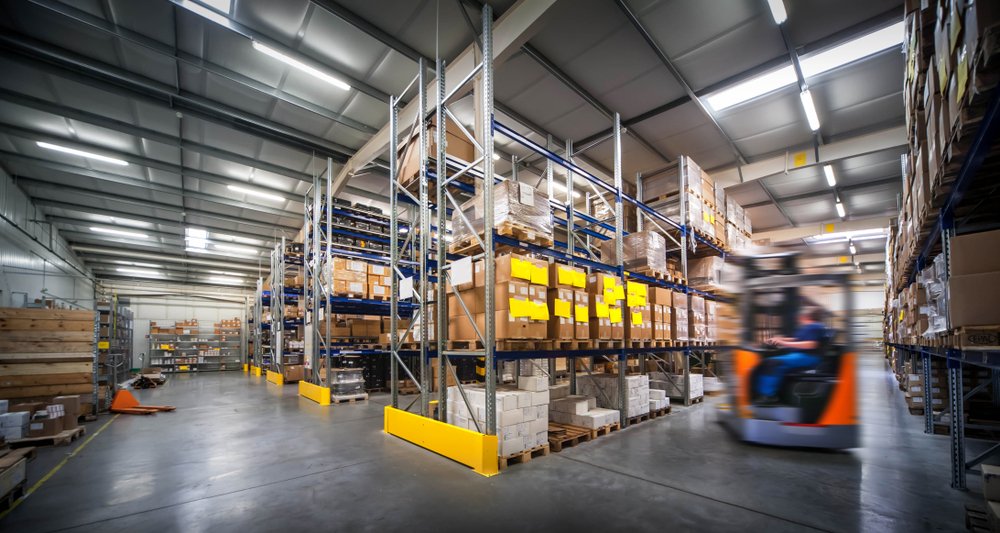Empty warehouses
SMB Australian Building and Construction manufacturers have emptied warehouses to the lowest levels since 2018 amid global trade uncertainty, according to new data released last week.
Reducing stock levels to avoid overextending
The latest Unleashed Manufacturing Report, analysing 12 manufacturing sub-sectors in Australia, NZ, and the UK, shows that the AU Construction Manufacturing Industry is responding to global pressures chiefly through stock control, says Unleashed Head of Product Jarrod Adam.
“If you’re an Aussie manufacturer who sells your goods overseas, you don’t want to get caught without an umbrella in a tariff storm. Clearly, many makers of goods in the construction sector have realised this and have been actively working to reduce their stock levels to avoid overextending themselves, with excess inventory dropping 77 per cent in Q4,” said Adam.
“For Building and Construction manufacturers, there are several potential impacts of Trump’s tariffs to watch closely. Namely if Chinese steel is unable to be sold to the US, they could dump their stock in Australia, depressing our steel price and negatively impacting profits in the industry. Any Australian manufacturers that rely on US equipment may find their operating costs increasing,” said Adam.
Australian construction manufacturers cut inventory 77 per cent to lowest levels since 2018 – amid tariff uncertainty
Tariff fallouts will be relatively contained
Building and construction sales revenue was down 30 per cent in the final quarter of 2024, to an average of $438,529.74 from $633,060.00 in the previous quarter.
“The drop in revenue for the industry is causing stress for many in AU construction, and provides all the more reason for businesses to be wary of overextending themselves with more stock than they can sell,” Adam said.
However, Simon Croft, Chief Executive – Industry & Policy at Housing Industry Association, says Australia’s trade deficit with the United States means the fallout of tariffs will be relatively contained.
“Even under the most pessimistic outcomes, $24 billion worth of Australian merchandise exports to the US is a tiny fraction of our global merchandise exports – just 4.6 per cent in 2024. Notwithstanding the specific pain that can be inflicted on individual targeted industries, the overall effect on the Australian economy, inflation and, therefore, interest rates, would be limited,” said Croft.
Data shows care being taken in controlling excess stock
The report by the inventory management software company shows Australian businesses are actively reducing the amount of stock held over optimum levels, which dropped 60 per cent in Q4 compared to the previous quarter.
Food manufactures saw a -27.75 per cent drop in excess stock levels in Q4, compared to its previous rolling average. In a monetary figure average excess stock levels dropped to $61,366, its lowest average excess stock holding since Unleashed manufacturing health index records began in 2018.
The stock level change for the AU construction sector was one of the largest changes in stock levels seen in Australian manufacturing this quarter, and points to the tough challenges facing the industry.
“The dropping overstock levels in AU Construction points to businesses carefully monitoring tensions in global trade, and making sure that they are not overexposed to changes in export trends. Over the previous five years Aussie manufacturers have learned to stay afloat during global upheaval. However, unlike the insecure supply chains of the early 2020s when companies stockpiled, we may see them head the other direction in 2025,” said Adam.
Purchase Orders remain stable as businesses don’t risk over extension
Another metric to watch in this environment is Purchase Orders. Overall the 12-month rolling average of purchasing activity across all sectors trended slightly negative for Australia, dropping -2.6 per cent.
Purchase orders for the Building and Construction industry trended slightly lower than this, an average of -3.26 per cent in Q4. This shows that both customers and suppliers are watching the current market with care, to see what costs to stock are added through the current tariff war.
“Purchase orders are a metric of confidence in the future for both suppliers (who need to be confident they can deliver this figure) and buyers (who need to be confident they can afford and use the units). To see this slightly dip alongside the drop in overstock levels points to a cautious atmosphere in AU manufacturing in this current environment,” Adam said.
Sales revenue flattening across the board
The overall rising trend in sales revenue has now flattened off with a significant drop of -23 per cent quarter on quarter, down from a rise of 4.47 per cent in the previous quarter.
Viewed as a yearly total, average sales revenue for 2024 was $2.127m, marginally higher than 2023’s $2.122m.
Comparing Q4 2024 to Q4 in 2023, the average Australian SME manufacturer brought in 16 per cent less revenue in Q4 2024 than in Q4 2023 – down from $598,059 to $500,590.
All sectors recorded a drop in sales in Q4 with the exception of Sport, Entertainment & Recreation manufacturers, which lifted sales 30.7 per cent.


